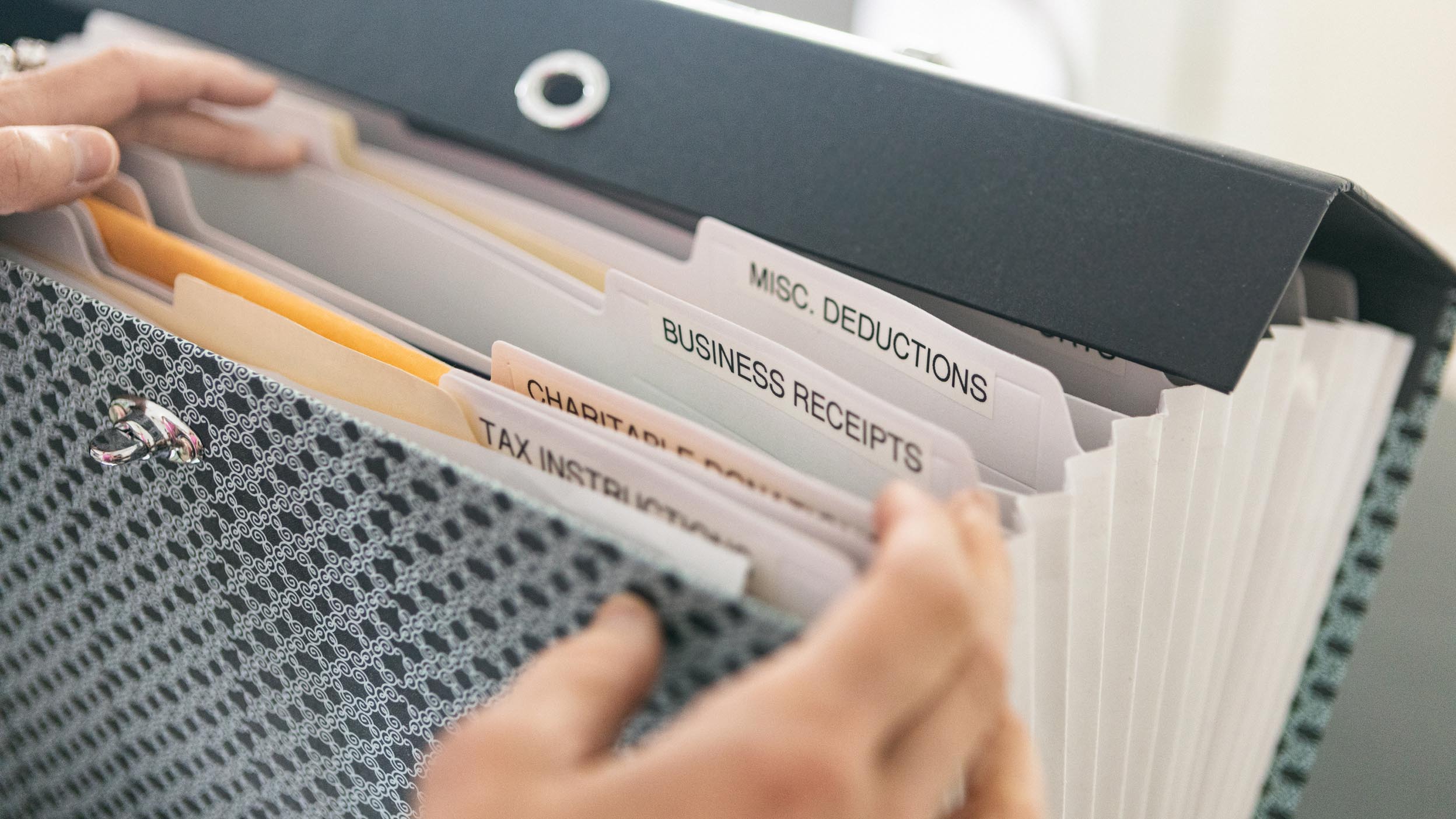
Tax & Estate planning Tax savvy: Navigating 2024 filing changes
Learn what you need to know about 2024 tax filing and what’s coming in 2025.

Are you looking forward to an income tax refund? If you’re like most people, you probably are — and who can blame you — it’s free money, right? Well, not exactly. In this article, we explain the nature of a tax refund and an alternative to potentially help you reach your investment goals faster.
A tax refund is simply a return of overpayment in prepaid taxes taken from your pay cheque throughout the year.
As you earn employment income during the year, your employer is obligated to withhold a portion of each pay cheque as payroll withholding amounts. Amounts withheld include income tax, Canada pension plan (CPP) contributions, and Employment Insurance (EI) premiums, all of which are remitted to the Canada Revenue Agency (CRA) on your behalf. The withholding amounts are calculated based on predetermined formulas.
When you file your income tax return for the year, you reconcile the amount of income you earned and claim any allowable deductions (to reduce your income that is subject to tax) and tax credits (to reduce tax payable) to determine your ultimate tax liability.
If your tax payable is lower than what was already withheld and remitted to the CRA on your behalf, you will receive a tax refund. As you can see, the prepaid amount is essentially a tax-free loan (from you) to the government, which puts it to use until you receive a tax refund.
On the other hand, a lower source deduction allows you to keep the money that belongs to you as it’s not remitted to the CRA in payroll withholding — instead it goes directly to your bank account. This is done by informing the CRA of certain deductions and tax credits you expect to claim. The CRA will review the request and authorize a reduction in payroll withholding by informing your employer to withhold a lower amount per pay cheque.
There are two main reasons why reducing source deductions may work better than a tax refund. First, it provides you with extra monthly income that can be invested right away, as opposed to waiting for the big cheque a few months into the following year, assuming you file your income tax return before the deadline. Second, having extra cash flow each month makes it easier to stick to your regular savings/investment strategy, especially when combined with an automatic investment service, namely a pre-authorized chequing (PAC) plan.
Here’s an example of the positive effect of reducing tax at source:
Amy lives in Ontario and earns an annual gross salary of $80,000, or monthly gross income of $6,667. She makes personal RRSP contributions (not deducted at source from salary) of $400 per month and incurs $500 per month of childcare expenses. As a result of applying to the CRA to reduce source withholding tax, Amy’s required payroll deductions are reduced thereby increasing her take-home net pay by an extra $279 per month.
| Without reduction at source | With reduction at source | |
| Gross income per pay period (monthly) | $6,667 | $6,667 |
| Less: | ||
| Non-payroll RRSP deductions | $(400) | |
| Childcare expenses | $(500) | |
| Monthly taxable income | $6,667 | $5,767 |
| Less: Federal & Provincial taxes | $(1,334) | $(1,055) |
| Less CPP & EI deductions | $(469) | $(469) |
| Monthly net income | $4,864 | $5,143 |
| Monthly additional cash flow | $279 |
Note: The withholding figures in the above table are generated using the CRA payroll calculator for illustrative purposes only. Figures have been rounded and are approximates.
Amy invests that extra cash each month at an annual rate of return of 4.5%. For a fair comparison, we will assume the same lump-sum amount would be otherwise received as a tax refund and invested once a year after filing her tax return ($3,348, calculated as $279/month × 12 months). We will keep the same rate of return (4.5% per annum) and investment period. In practice, the amount of the actual tax refund is impacted by other income, tax credits, or deductions and may not equal the monthly extra cash flow multiplied by 12.
| Year | End of year investment balance (Monthly contribution) |
End of year investment balance (Annual contribution) |
| 1 | $3,431 | $3,348 |
| 5 | $18,804 | $14,968 |
| 10 | $42,342 | $37,793 |
| 15 | $71,808 | $66,237 |
| 20 | $108,693 | $101,684 |
| 25 | $154,865 | $145,856 |
| 30 | $212,663 | $200,904 |
| Extra investment growth | $11,760 |
Over the course of 30 years, Amy’s monthly contributions of $279 are expected to grow to $212,663. She earns $11,760 more in comparison to investing the same lump-sum tax refund once a year. If the amount is invested within a tax-free or tax-deferred environment (e.g., registered retirement savings plan (RRSP) or tax-free savings plan (TFSA)), no tax is paid throughout the investment period (if invested within a TFSA, the entire amount can be withdrawn tax free).
The difference between investing monthly and annually may not seem attractive enough at first; however, remember that the extra net pay does not require any extra income earned, it just means less withholding tax taken throughout the year. Here are some arguments in favour of smaller but more frequent investments:
Effectively, automating the plan reduces the human element that may hinder the ability of the individual to stick to the plan over the long term. From a behavioural finance perspective, having a regular, relatively smaller automated purchase plan increases the chances of strategy endurance over the long term. As we know, it’s time in the market over the long term that can have the biggest positive impact to one’s investment success.
Follow these three simple steps:
Step 1 – Complete the CRA form(s)
Two CRA forms are relevant – TD1, Personal Tax Credits Return and T1213, Request to Reduce Tax Deductions at Source. (Commissioned employees may use Form TD1X, Statement of Commission Income and Expenses for Payroll Tax Deductions in addition to Form TD1.) Both TD1 and T1213 forms take into account tax deductions and credits that you intend to otherwise claim at tax time, and that information will be used to reduce your source withholding per pay cheque.
Form TD1 is typically completed when you have a new employer, however it can be resubmitted if your circumstances have changed. The TD1 form contains certain tax credits that can be declared, such as the tuition tax credit, pension income tax credit, disability tax credit, eligible dependent tax credit, etc.
Form T1213 can be filed with your local tax office to request reduced source deductions where the deductions and tax credits you wish to claim are not listed on Form TD1. Form T1213 contains an expanded set of deductions and tax credits, including registered retirement savings plan (RRSP) contributions, childcare expenses, support payments, employment expenses, medical expenses, and donations, to name a few. Supporting documents are required to substantiate the amounts claimed in the form. Also, in order to file T1213, your previous years’ income tax returns need to be assessed and any amount owing must be paid in full. The request is generally filed every year with the CRA. However, if you expect the same amount being claimed from year to year, you may submit the request every two years by providing a separate form for each year.
Step 2 – Submit the CRA form(s)
Form TD1 is submitted/resubmitted to your employer.
Form T1213 must be sent to your local tax office as indicated on the last page of form. After reviewing and approving your request, the CRA will issue a letter of authority, which you can provide to your employer to start deducting less tax from your pay cheques.
Step 3 – Start a pre-authorized chequing (PAC) plan
Whatever amount you gain each pay period by reducing your tax at source can be automatically transferred to your investment portfolio through a PAC plan. Since your contribution is deducted directly from your account at your financial institution, the transition is seamless. You can set up a PAC plan at Invesco with the help of your financial advisor.

Learn what you need to know about 2024 tax filing and what’s coming in 2025.

The Tax and Estate team discusses the PFIC rules as they apply to U.S. residents holding foreign securities, including Canadian-domiciled mutual funds and exchange-traded funds.

The uncertain destiny of capital gains tax
NA2306733
Important information
Image: Studio Firma / Stocksy
For more information about this topic, call us at 1.800.874.6275.
Commissions, trailing commissions, management fees and expenses may all be associated with mutual fund investments. Mutual funds are not guaranteed, their values change frequently and past performance may not be repeated. Please read the simplified prospectus before investing. Copies are available from your advisor or from Invesco Canada Ltd.
The information provided is general in nature and may not be relied upon nor considered to be the rendering of tax, legal, accounting or professional advice. Readers should consult with their own accountants, lawyers and/or other professionals for advice on their specific circumstances before taking any action. The information contained herein is from sources believed to be reliable, but accuracy cannot be guaranteed.
This link takes you to a site not affiliated with Invesco. The site is for informational purposes only. Invesco does not guarantee nor take any responsibility for any of the content.